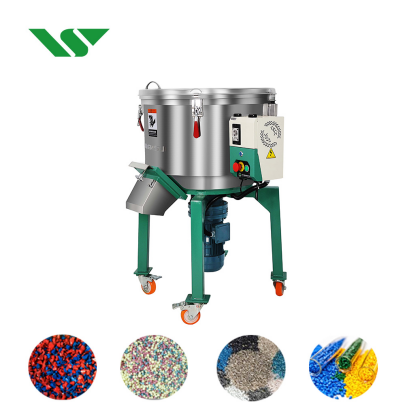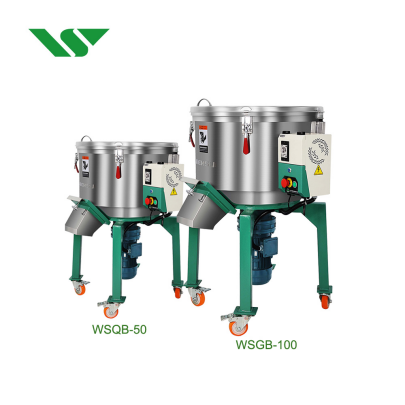How to Choose the Right Mixer for Your Injection Molding Plant
2025-03-08 Page view:
Picking the perfect mixer for your injection molding operation isn’t just about specs—it’s about solving real-world problems. Get it wrong, and you’ll face uneven mixes, downtime, or sky-high energy bills. But get it right? You’ll boost product quality, slash costs, and keep production humming. Let’s break down how to nail your mixer selection with practical, step-by-step advice.

Step 1: Match the Mixer to Your Materials and Workflow
Ask yourself:
“What am I mixing?”
High-viscosity resins like PVC? You’ll need a high-torque mixer (think 5.5kW+ motors) to push through resistance.
Powders or glass-fiber blends? Prioritize sealed designs to stop dust leaks and wear-resistant alloy blades.
“How much am I making daily?”
Small batches (under 500kg/day)? Compact vertical mixers save floor space.
Running 24/7 production? Go horizontal—they handle large volumes without constant babysitting.
Pro Tip: Test your material in a demo mixer! Many suppliers offer trials to check for clumping, fiber separation, or uneven blending.
Step 2: Crush Hidden Costs with Smart Specs
Don’t just eyeball the price tag—calculate lifetime costs:
Energy Hogs vs. Savers:
Variable frequency drives (VFDs) adjust speed/power to match demand. Example: Dialing down rpm during low-load mixing can cut yearly power bills by 15% (like that automotive parts factory case!).
Maintenance Nightmares?
Modular designs let you swap worn seals or bearings in minutes. Look for stainless steel or ceramic-coated parts if you’re mixing corrosive materials.
Real-World Hack: One plant mixing ABS + 30% glass fiber saved $8,200/year by upgrading to a 7.5kW mixer with dual propellers. The result? Zero fiber clumps and smoother production.

Step 3: Avoid These 3 Costly Mistakes
Ignoring “Dead Zones”:
Poor paddle design leaves unmixed material in corners. For sticky resins, turbine-style blades work better than basic propellers.
Overpaying for Speed:
High rpm isn’t always better. Powders mix best at 50-150 rpm—go faster, and you’ll aerate the batch or wear out parts.
Skipping After-Sales Research:
A cheap mixer with no support? Big mistake. Prioritize brands like Wensui Group with ISO-certified techs and 24/7 remote diagnostics.

The Bottom Line
Your mixer isn’t just a machine—it’s the backbone of your product quality. By aligning equipment specs with your actual materials, workflow, and budget, you’ll avoid headaches and keep your injection molding line competitive.
Next Step: Book a 30-minute consultation with your supplier. Bring a sample of your toughest material and grill them on energy efficiency, warranty terms, and real client reviews.



